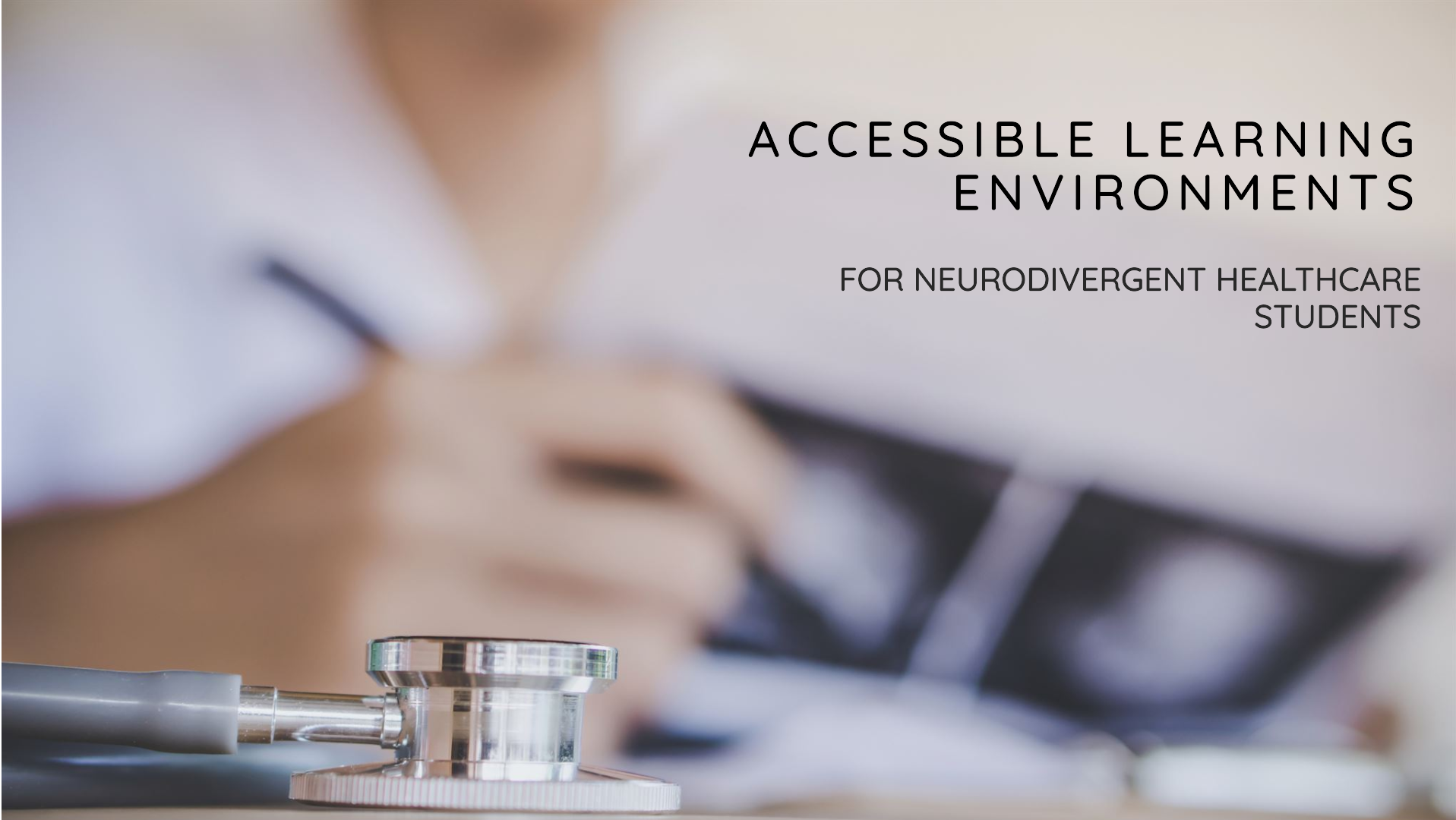
Healthcare education thrives on diversity, and neurodivergent students—those with Autism, ADHD, Dyslexia, and other neurological differences—bring unique perspectives and strengths to the field. However, traditional educational approaches can inadvertently create barriers that make it difficult for these students to thrive.
On this International Day of Persons with Disabilities, let’s explore how healthcare education, particularly simulation-based learning, can become more inclusive and accessible for neurodivergent students. By tailoring learning environments and adapting simulations for all abilities, we can ensure that every student has the opportunity to succeed and contribute to the healthcare profession.
Understanding Neurodivergence in Healthcare Education
Neurodivergent students often experience challenges related to:
-
Sensory sensitivities (e.g., loud noises, bright lights, or chaotic environments).
-
Processing information at different speeds or in non-linear ways.
-
Maintaining focus and managing executive functioning tasks like organisation and time management.
-
Social communication differences, which may impact teamwork or interactions with patients.
Despite these challenges, neurodivergent individuals bring strengths such as heightened attention to detail, creative problem-solving, and the ability to think outside the box—qualities that are invaluable in healthcare.
Adapting Simulations for Inclusivity
Simulation-based learning is a cornerstone of healthcare education, offering students the chance to practice clinical skills in a controlled, risk-free environment. For neurodivergent students, simulations can be highly effective if thoughtfully adapted. Here are strategies to create accessible simulations:
-
Provide Clear, Structured Instructions
Ambiguity in simulation scenarios can increase anxiety for neurodivergent students. Offering detailed instructions, both verbally and in writing, helps them understand expectations and prepare effectively. Visual aids, such as flowcharts or checklists, can further clarify steps and reduce cognitive load. -
Offer Sensory-Friendly Options
Simulation environments often include loud alarms, bright lights, and bustling activity, which can be overwhelming for students with sensory sensitivities. To accommodate these needs:-
Provide noise-cancelling headphones or earplugs.
-
Allow students to adjust lighting or reduce unnecessary noise.
-
Create smaller, quieter simulation settings as an alternative to high-intensity scenarios.
-
-
Allow Time for Reflection and Processing
Neurodivergent students may benefit from additional time to process information before, during, or after a simulation. Offer pauses during scenarios to allow them to gather their thoughts or provide time post-simulation for reflection before moving into a debrief session. -
Customise Debriefing Styles
Debriefing is a critical component of simulation-based learning, but it’s important to adapt it to different communication styles. For example:-
Use structured feedback with specific, actionable points.
-
Provide written feedback alongside verbal discussions.
-
Encourage one-on-one debriefs for students who may feel uncomfortable sharing in a group setting.
-
-
Utilise Virtual and Augmented Reality (VR/AR)
VR and AR tools can be powerful for creating tailored learning experiences. These technologies allow students to practice at their own pace in environments that can be adjusted for sensory preferences. For instance, scenarios can be simplified or modified to focus on specific skills without unnecessary distractions. -
Foster Peer Support and Team Inclusion
Team-based simulations can be challenging for neurodivergent students who may approach communication or teamwork differently. Encourage open dialogue within teams about collaboration styles and ensure that all members feel valued. Educators can also pair neurodivergent students with supportive peers to create a more inclusive dynamic.
Creating an Inclusive Learning Culture
While adapting simulations is vital, inclusivity must extend beyond individual scenarios. Here are broader strategies to create a culture of accessibility in healthcare education:
-
Educator Training on Neurodivergence
Educators should receive training on understanding neurodivergence and its impact on learning. Awareness of neurodivergent needs helps instructors create supportive, empathetic learning environments. -
Flexible Policies and Practices
Offer accommodations such as extended time for assessments, alternative formats for assignments, and flexible attendance policies for students managing their neurodivergent traits. -
Open Communication Channels
Encourage students to share their needs and preferences without fear of stigma. Having a clear process for requesting accommodations ensures they receive the support they need. -
Highlight Neurodivergent Strengths
Shift the narrative to focus on the unique contributions of neurodivergent students. Recognise and celebrate traits like attention to detail, innovative thinking, and resilience, which enrich the healthcare workforce.
The Impact of Inclusion
Creating accessible learning environments isn’t just about compliance or accommodations; it’s about unlocking potential. When neurodivergent students are supported, they can excel in healthcare education, bringing diverse perspectives and strengths to the profession. Inclusion benefits everyone, fostering a richer, more empathetic healthcare workforce.
On this International Day of Persons with Disabilities, let’s commit to making healthcare education more inclusive for neurodivergent students. By adapting simulations and embracing flexible, supportive practices, we can ensure that all students—regardless of ability—have the opportunity to thrive.
When we create environments that celebrate diversity, we not only empower individual students but also build a stronger, more innovative healthcare system for the future.
Actionable Insight
Educators: Start small by incorporating sensory-friendly practices or offering structured instructions in your simulations.
Neurodivergent students: Advocate for your needs and explore tools like VR for personalised learning experiences. Together, we can foster a more inclusive healthcare education landscape.
Leave a Reply